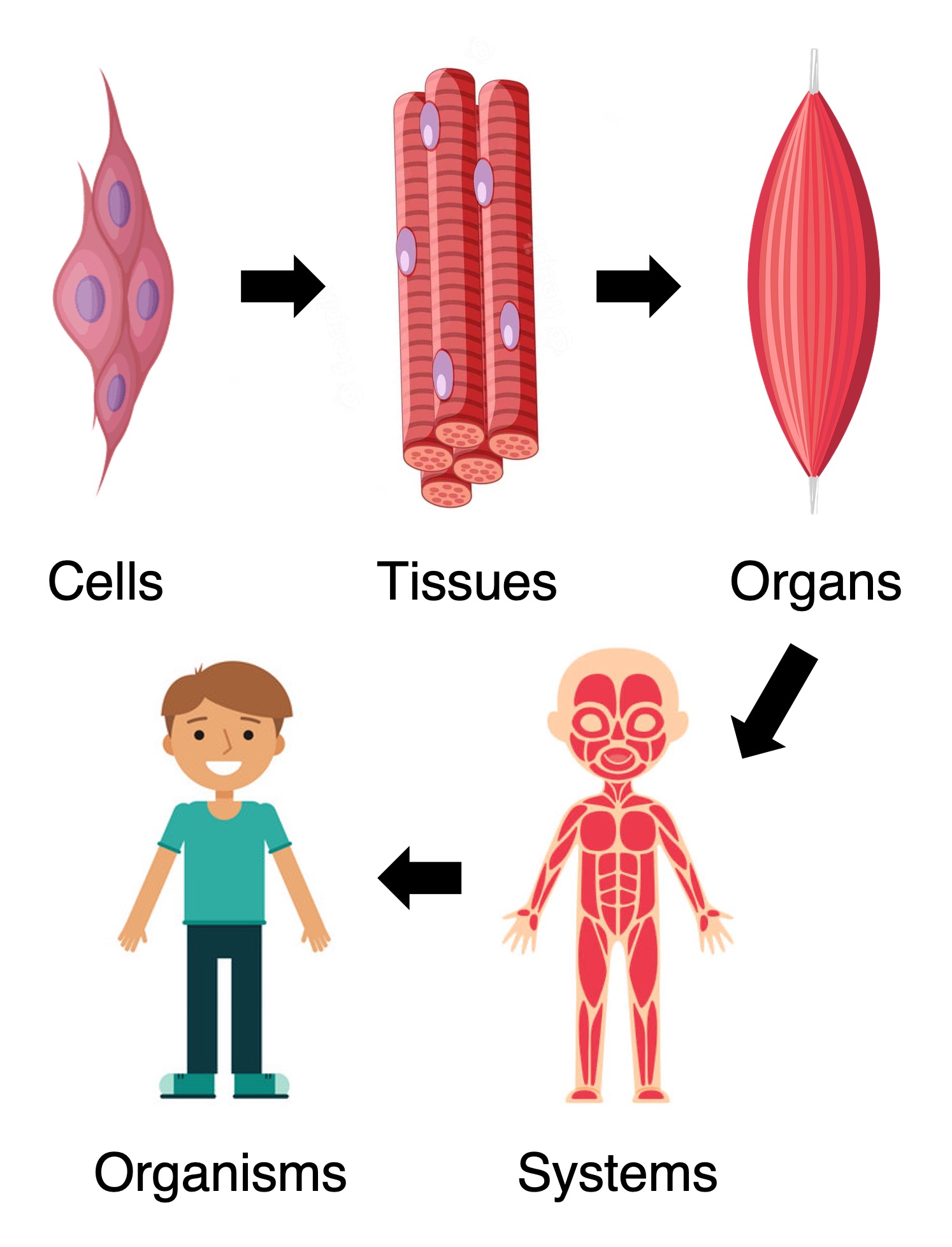

Multicellularity
Multicellular organisms are composed of multiple cells operating in unison to support the total lifeforms
-
All plant and animal species are multicellular, along with most fungi and several species of eukaryotic algae
Multicellularity has evolved repeatedly and offers several distinct survival advantages
-
Being multicellular allows an organism to exceed size limits normally imposed by SA:Vol ratio limitations
-
Multicellular organisms can have longer lifespans as the organism can survive the death of an individual cell
-
Multicellularity fosters complexity by allowing the differentiation of cell types within a single organism
One challenge faced by multicellular organisms is the occurrence of cancer – whereby cells fail to regulate their normal pattern of growth within the organism
Multicellular Specialisation
Multicellullar organisms are capable of completing functions that unicellular organisms could not undertake – this is due to the collective actions of individual cells combining to create new synergistic effects
-
These new functions are called emergent properties and arise as a consequence of cell specialisation
In a multicellular organism, the differential expression of genes causes cells to become specialised and develop unique functions
-
The differing patterns of gene expression may be coordinated by extracellular signals or triggered by changes in the environment
In multicellular organisms:
-
Cells of the same type may be grouped together to form tissues
-
The functional grouping of multiple tissues results in the formation of organs
-
Organs may interact to form organ systems capable of carrying out specific body functions
-
Organ systems collectively carry out the life functions of the complete organism
Cell Organisation






